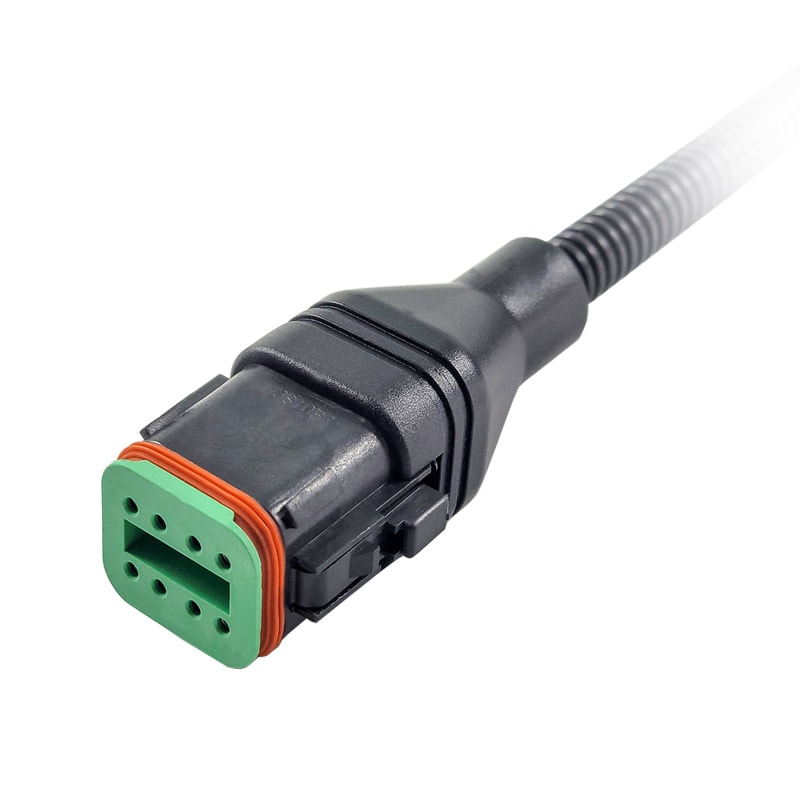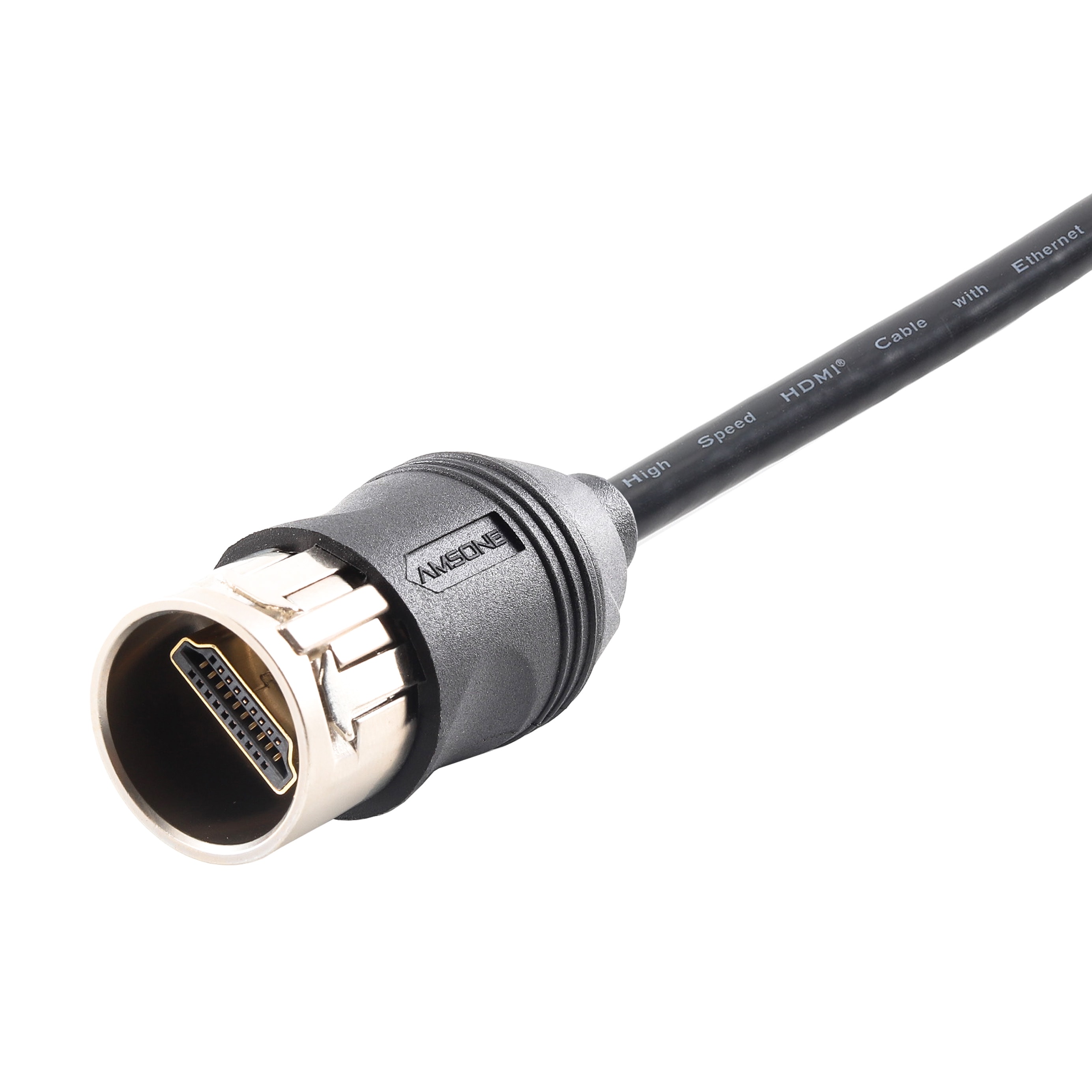Understanding RG58 Cable: Structure, Applications & Selection Guide
Views: 3667
Author: Site Editor
Publish Time: 2025-06-21
Origin: Site
In modern electronic communication systems, coaxial cable, as an important medium for high-frequency signal transmission, is widely used in many fields such as wireless communication, data network, security monitoring and so on. Among them, RG58 cable, as a classic and commonly used coaxial cable type, occupies a place in many engineering scenarios by virtue of its good electrical performance and moderate cost.
This article will start from the basic definition of RG58 cable, in-depth analysis of its structural characteristics, typical application scenarios, the maximum length of use, power handling capacity, and provide practical advice on how to choose a quality product, to help engineers, technicians and electronics enthusiasts to better understand and rationalize the selection of RG58 cable.
Basics of RG58 Cable

What is RG58
"RG58" stands for Radio Guide 58, part of a U.S. military classification system for coaxial cables. Although the original standard is no longer in use, "RG58" remains a commonly recognized designation.
It was originally designed for military communications but has since been adopted in many civilian applications due to its compact size and affordable price.
Physical Structure and Electrical Properties
RG58 cable follows a standard coaxial design, consisting of four layers:
Center Conductor: Usually made of solid or stranded copper wire (~0.94mm), responsible for signal transmission.
Insulation Layer: Typically polyethylene (PE), with excellent dielectric properties.
Shielding Layer: Braided copper mesh, sometimes with aluminum foil, to reduce electromagnetic interference (EMI).
Outer Jacket: Usually PVC, offering protection against wear, weather, and fire.
Key Electrical Specifications:
Impedance: 50Ω (ideal for RF equipment)
Frequency Range: Up to about 1 GHz
Attenuation: Around 10–20 dB per 100 meters (varies with frequency)
Common Applications
Telecommunications and Wireless Communication
RG58 is often used to connect radios, antennas, and transceivers, especially in short-range, low-to-medium power RF systems. It’s popular among amateur radio users for its ease of use and affordability.
Computer Networking (Legacy Ethernet)
In the early days of networking, RG58 was used in Thin Ethernet (10BASE2), supporting data rates up to 10 Mbps. While largely replaced by twisted-pair cables, it may still be found in older systems.
Closed-Circuit Television (CCTV)
For analog video surveillance systems, RG58 can link cameras to recorders like DVRs. It's often chosen for small-scale or temporary setups due to its easy termination and reasonable cost.
Test and Measurement Equipment
Because of its stable electrical performance and standardized design, RG58 is also used in labs to connect devices like oscilloscopes, signal generators, and spectrum analyzers.
Maximum Length and Power Handling
Recommended Maximum Length
The effective transmission distance of RG58 depends on the signal frequency:
Low-frequency signals (e.g., video/audio): Up to ~45 meters (150 feet)
High-frequency RF signals (e.g., 2.4GHz Wi-Fi): Limited to ~15 meters (50 feet)
Beyond these limits, signal loss increases significantly, which can affect performance. In such cases, consider using lower-loss cables like RG8 or LMR-400.
Power Handling Capability
RG58 is suitable for low to medium power applications:
Typical VSWR (Voltage Standing Wave Ratio): ≤ 1.3:1, indicating good impedance matching
Max Continuous Power: About 50–100 watts (depending on frequency and length)
Prolonged high-power use may cause overheating, so RG58 is not recommended for high-power transmitters. For better durability, choose thicker cables like RG8 or RG213.
How to Choose High-Quality RG58 Cable
When selecting RG58 cable, consider the following factors:
Manufacturer and Brand Reputation
Choose cables from trusted coaxial cable manufacturers or certified suppliers. Reputable brands usually offer detailed specifications and technical support.
Construction Quality
The center conductor should be pure or tinned copper, not copper-clad steel.
A higher braid density (e.g., ≥95%) improves shielding performance.
Insulation material should be uniform and free of bubbles for long-term stability.
Connector Compatibility and Pre-made Cables
If buying pre-terminated cables, check the soldering quality of connectors, ensure secure contact, and verify that the shield is fully connected.
Application Suitability
Select the correct variant (e.g., RG58A/U, RG58C/U) based on your needs. Different versions vary slightly in shielding and conductor materials.

Conclusion
RG58 cable remains a versatile and cost-effective choice for many RF applications. Its simple design, ease of installation, and broad compatibility make it ideal for tasks like amateur radio, CCTV, and lab testing.
However, as technology advances, newer cables with lower loss and better performance are becoming more common. Therefore, when designing a system, always evaluate frequency, power, and distance before choosing RG58.
By understanding its features and limitations, and selecting quality products from trusted sources, you can ensure reliable performance in your projects — whether setting up a basic radio link or maintaining an older analog video system.

 EN
EN DE
DE JP
JP ES
ES SE
SE FR
FR IT
IT CN
CN 한국어
한국어 ภาษาไทย
ภาษาไทย بالعربية
بالعربية Nederlands
Nederlands Türkçe
Türkçe Język polski
Język polski Tiếng Việt
Tiếng Việt Zulu
Zulu Bahasa Malay
Bahasa Malay



